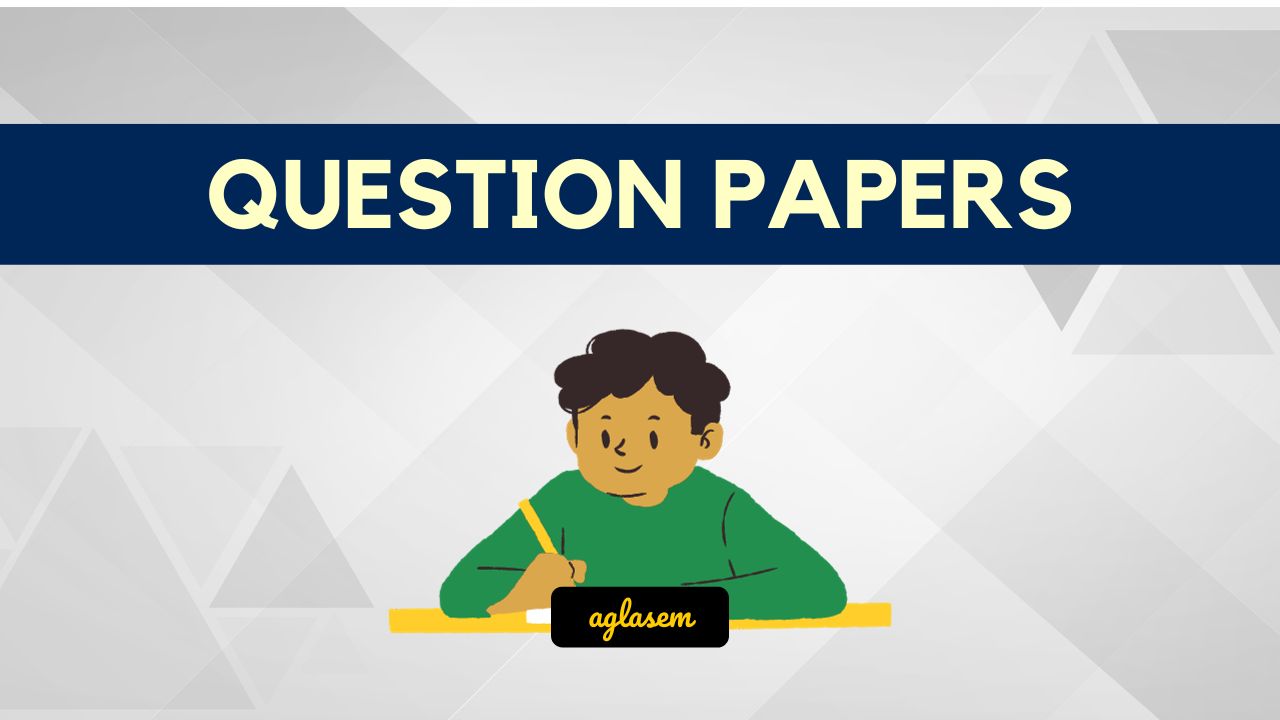NCERT Solutions for Class 11 Chemistry Chapter 8 Organic Chemistry – Some Basic Principles and Techniques has been published by Aglasem. You can now download the Class 11 Chemistry Ch 8 Questions and Answers PDF here. This NCERT Solutions for Class 11 Chemistry contains answers of all questions asked in Chapter 8 in textbook, Chemistry Part II. Therefore you can refer it to solve Organic Chemistry – Some Basic Principles and Techniques exercise questions and learn more about the topic.
NCERT Solutions for Class 11 Chemistry Chapter 8 Organic Chemistry – Some Basic Principles and Techniques
Class – Class 11
Subject – Chemistry
Chapter – Ch 8
Chapter Name – Organic Chemistry – Some Basic Principles and Techniques
Book – Chemistry Part II
Study Material – NCERT Solutions
NCERT Solutions for Class 11 Chemistry Chapter 8 PDF
While you can read NCERT Solutions for Class 11 Chemistry Ch 8 for all exercises here on aglasem. You can also download this NCERT Solutions PDF to refer ncer question answer at anytime when you study Organic Chemistry – Some Basic Principles and Techniques. Here it is.
NCERT Solutions for Class 11 Chemistry Chapter 8 PDF Download Link – Click Here to Download Solutions PDF
How to download NCERT Solutions for Class 11 Chemistry Chapter 8 PDF?
You can download the complete NCERT solutions for chapter 8 of this NCERT Book i.e. Chemistry Part II with following steps.
- First search NCERT Solutions for Class 11 Chemistry Ch 8 PDF aglasem and come to this page.
- Now you will see the exercise questions answers of Organic Chemistry – Some Basic Principles and Techniques and download pdf link on it.
- Click the Download PDF link to obtain the Organic Chemistry – Some Basic Principles and Techniques questions with answers document.
NCERT Solutions for Class 11 Chemistry
There are more chapters to study besides Organic Chemistry – Some Basic Principles and Techniques in this subject. So here are NCERT solutions for all topics of Chemistry taught in 11th class here at aglasem.
- Chapter 1 Some Basic Concepts of Chemistry
- Chapter 2 Structure of Atom
- Chapter 3 Classification of Elements and Periodicity in Properties
- Chapter 4 Chemical Bonding and Molecular Structure
- Chapter 5 Thermodynamics
- Chapter 6 Equilibrium
- Chapter 7 Redox Reactions
- Chapter 8 Organic Chemistry – Some Basic Principles and Techniques
- Chapter 9 Hydrocarbons
NCERT Solutions for Class 11
Just like you got Chemistry Ch 8 solutions here. You can see exercise questions answers of other subjects and their topics too on aglasem. Here are NCERT solutions for all subjects of 11th standard NCERT books.
- NCERT Solutions for Class 11 Accountancy
- NCERT Solutions for Class 11 Biology
- NCERT Solutions for Class 11 Business Studies
- NCERT Solutions for Class 11 Chemistry
- NCERT Solutions for Class 11 Economics
- NCERT Solutions for Class 11 English
- NCERT Solutions for Class 11 Geography
- NCERT Solutions for Class 11 Hindi
- NCERT Solutions for Class 11 History
- NCERT Solutions for Class 11 Maths
- NCERT Solutions for Class 11 Physics
- NCERT Solutions for Class 11 Political Science
- NCERT Solutions for Class 11 Psychology
- NCERT Solutions for Class 11 Sociology
NCERT Solutions for Class 11 Chemistry Chapter 8 – An Overview
The key highlights of this study material are as follows.
| Aspects | Details |
|---|---|
| Class | Class 11 |
| Subject | Chemistry |
| Chapter Number | Ch 8 |
| Chapter Name | Organic Chemistry – Some Basic Principles and Techniques |
| Book Name | Chemistry Part II |
| Book By | NCERT (National Council of Educational Research and Training) |
| Educational Resource Here | NCERT Solutions of Class 11 Chemistry Ch 8 for All Exercise |
| More Questions Answers of This Subject | NCERT Solutions for Class 11 Chemistry |
| Download Book Chapter PDF | NCERT Book Class 11 Chemistry Chapter 8 |
| All Questions Answers For This Class | NCERT Solutions for Class 11 |
| Complete Solutions | NCERT Solutions |
If you have any queries on NCERT Solutions for Class 11 Chemistry Chapter 8 Organic Chemistry – Some Basic Principles and Techniques, then please ask in comments below.
To get study material, exam alerts and news, join our Whatsapp Channel.



























